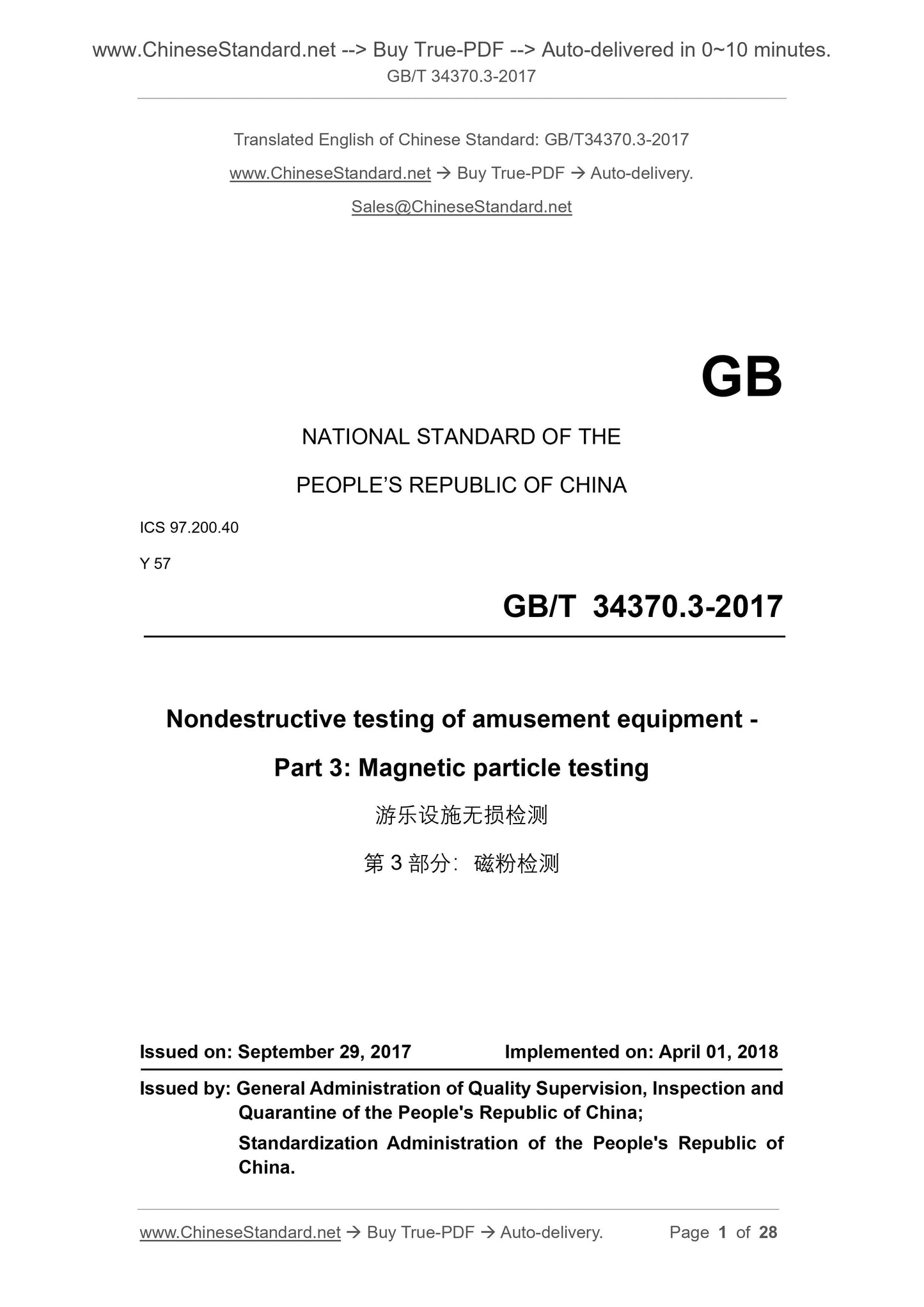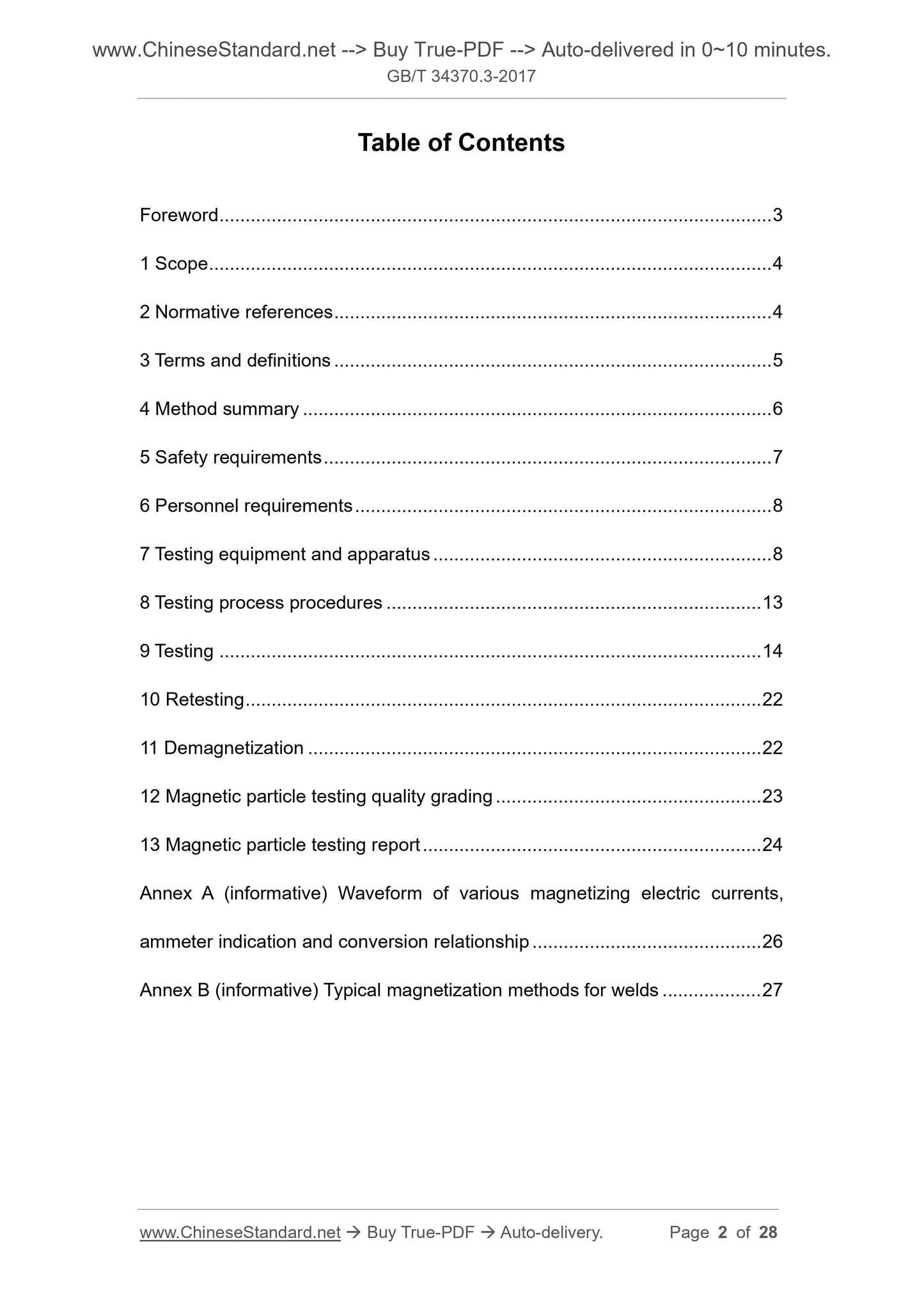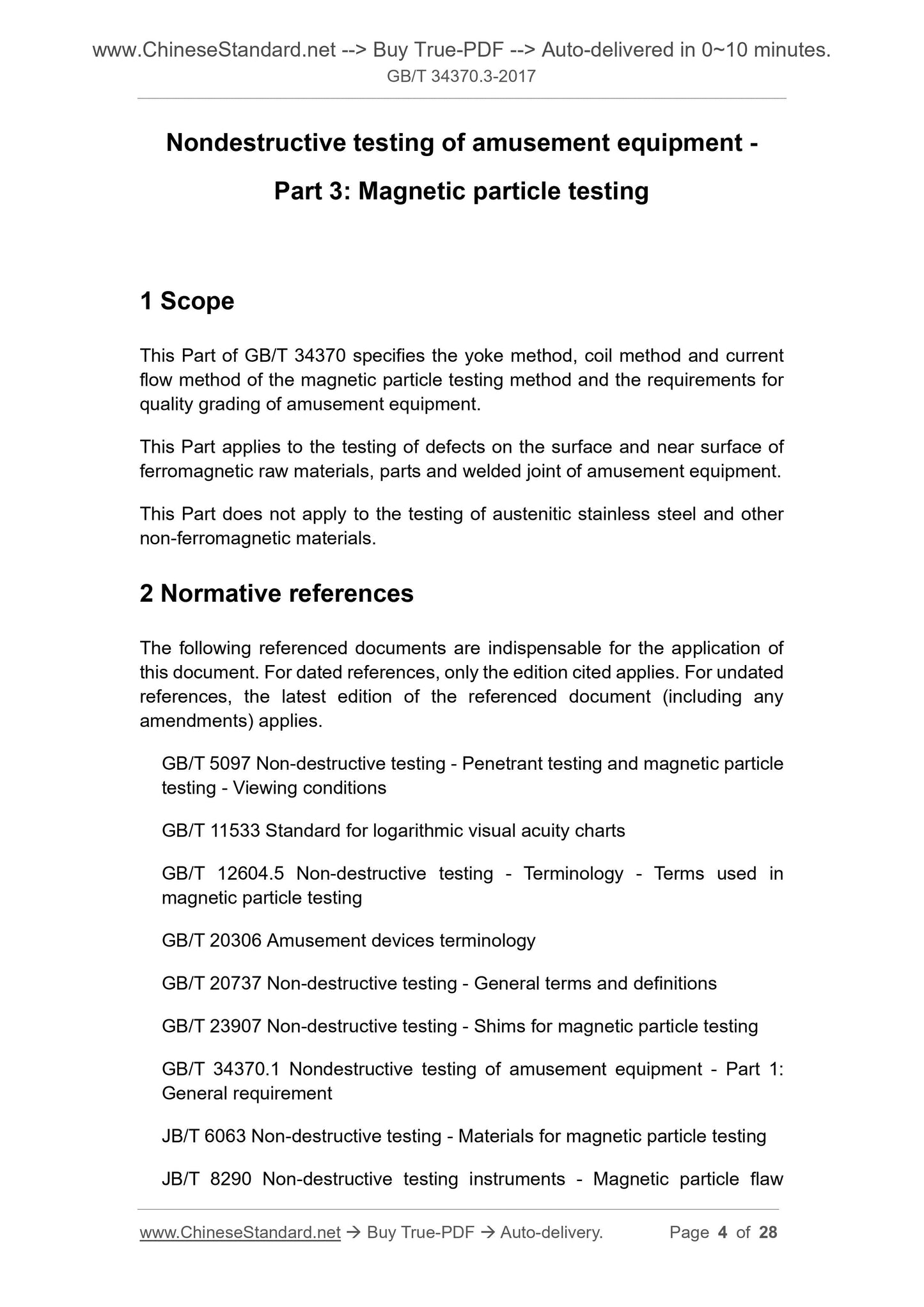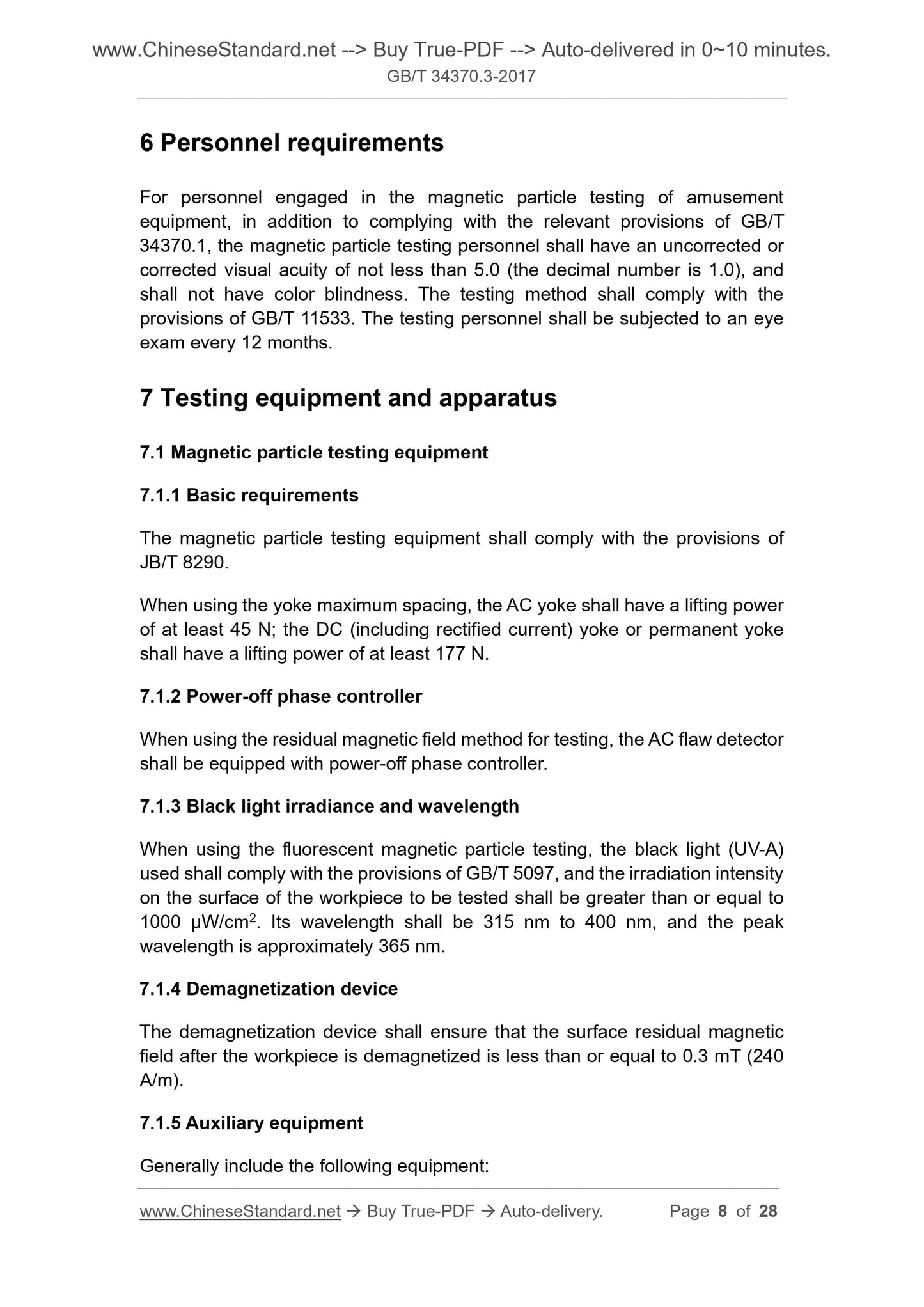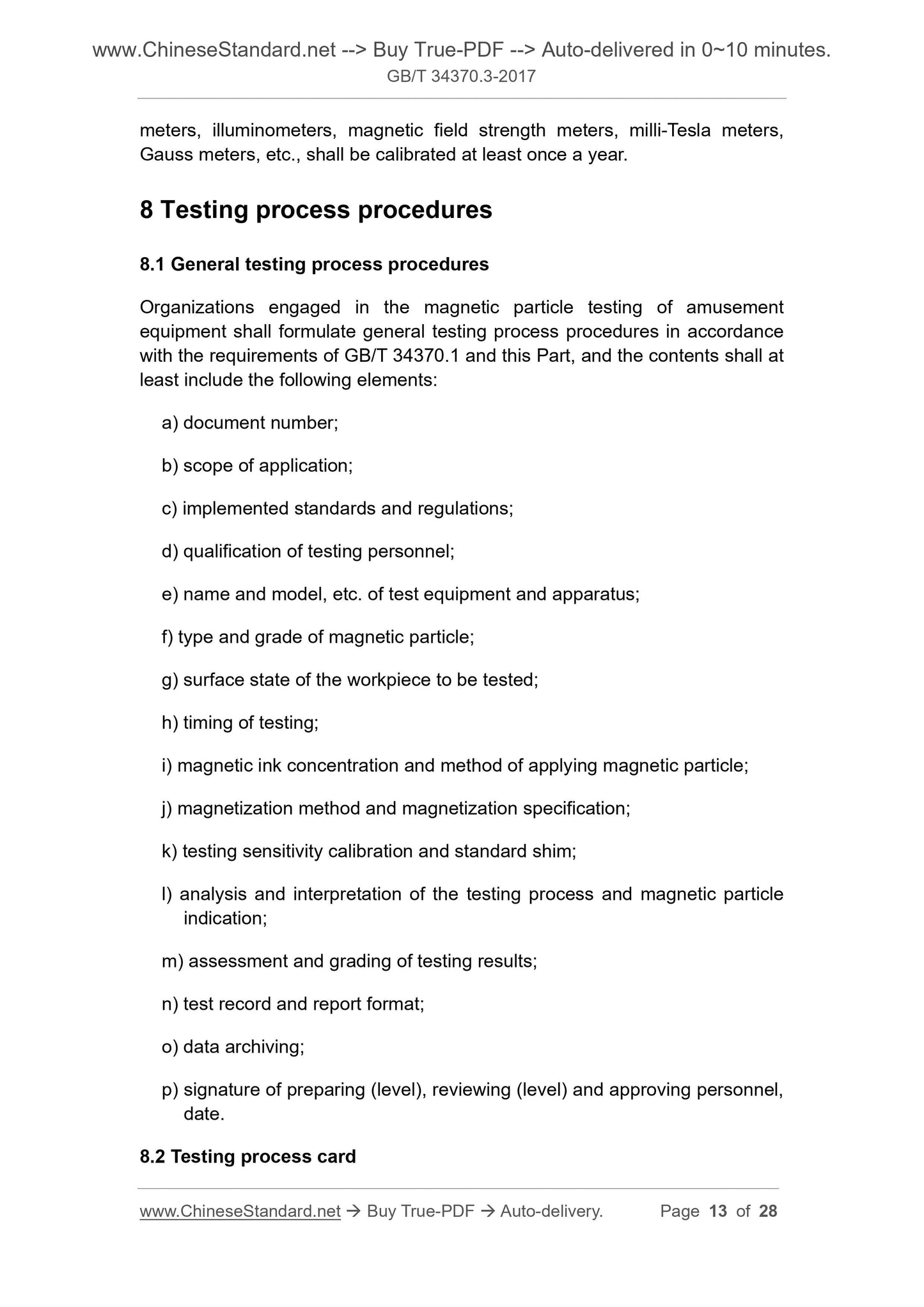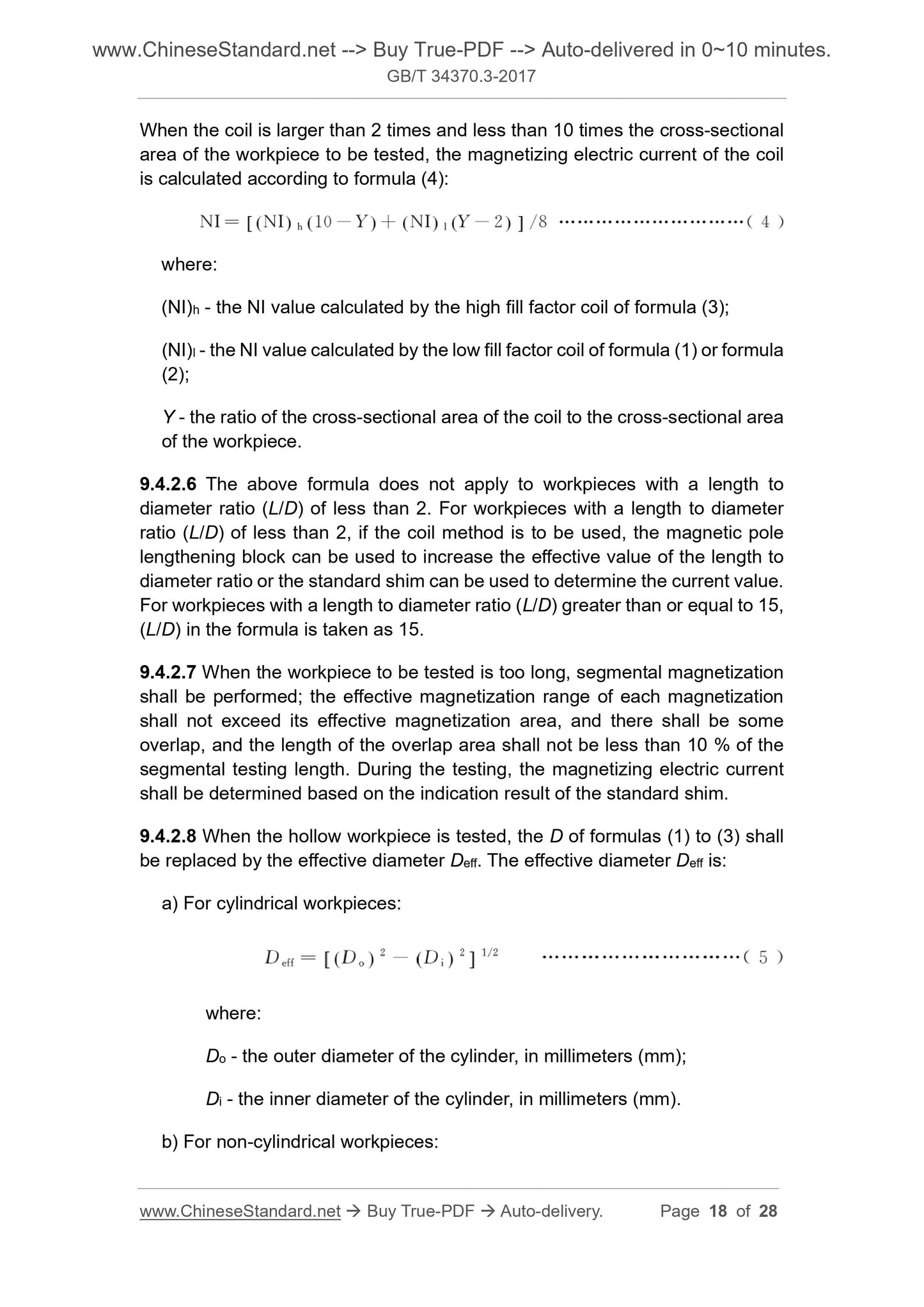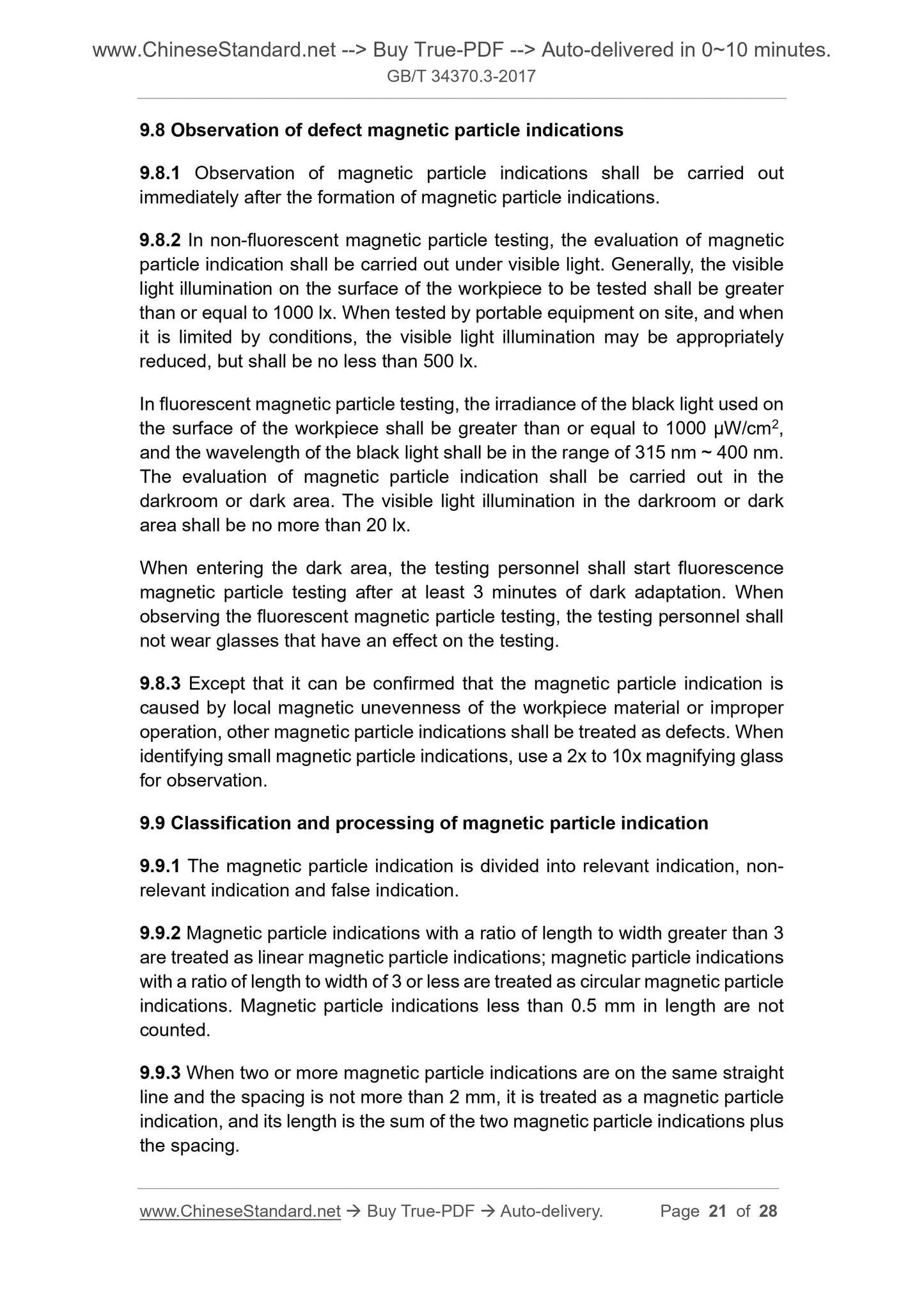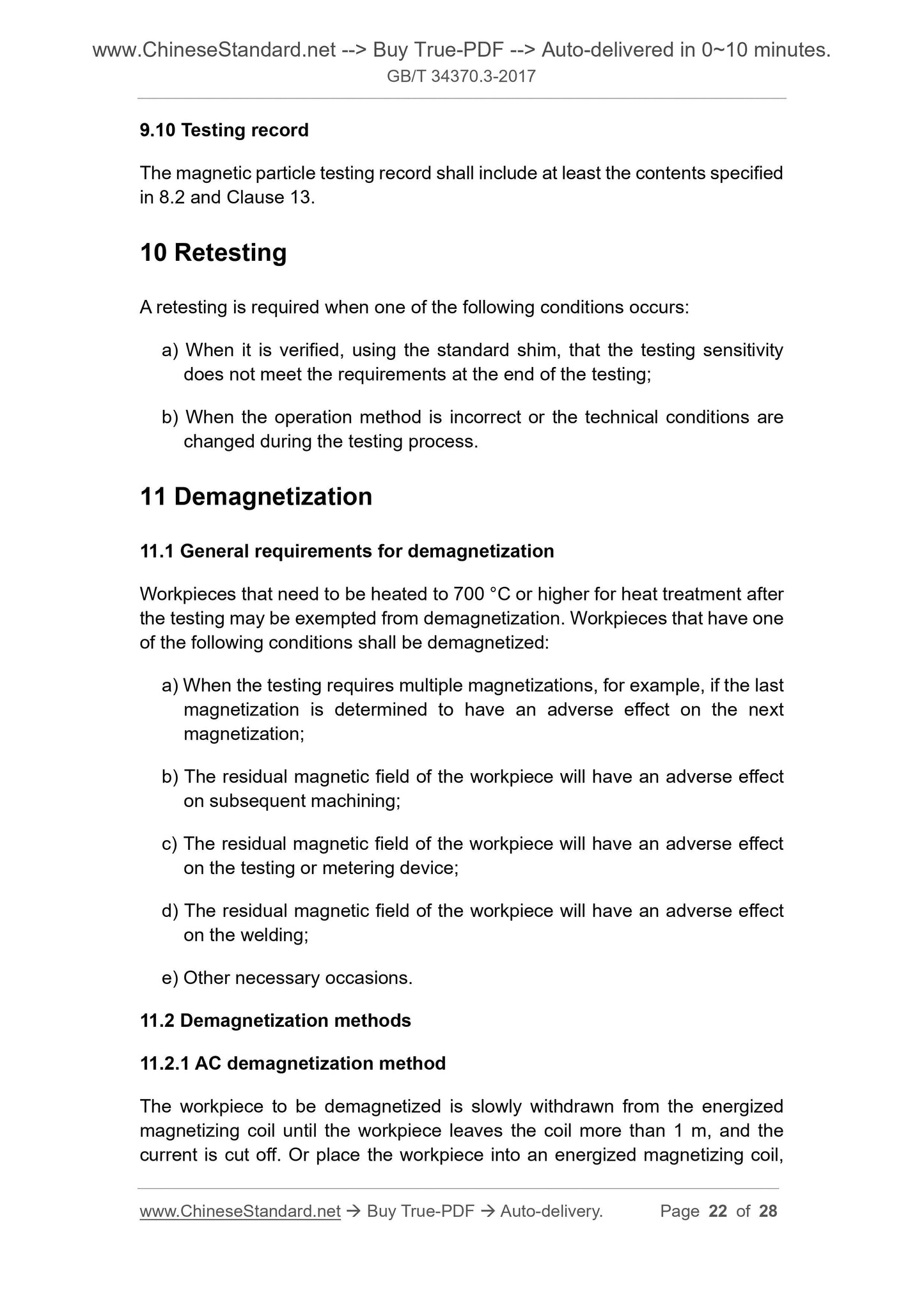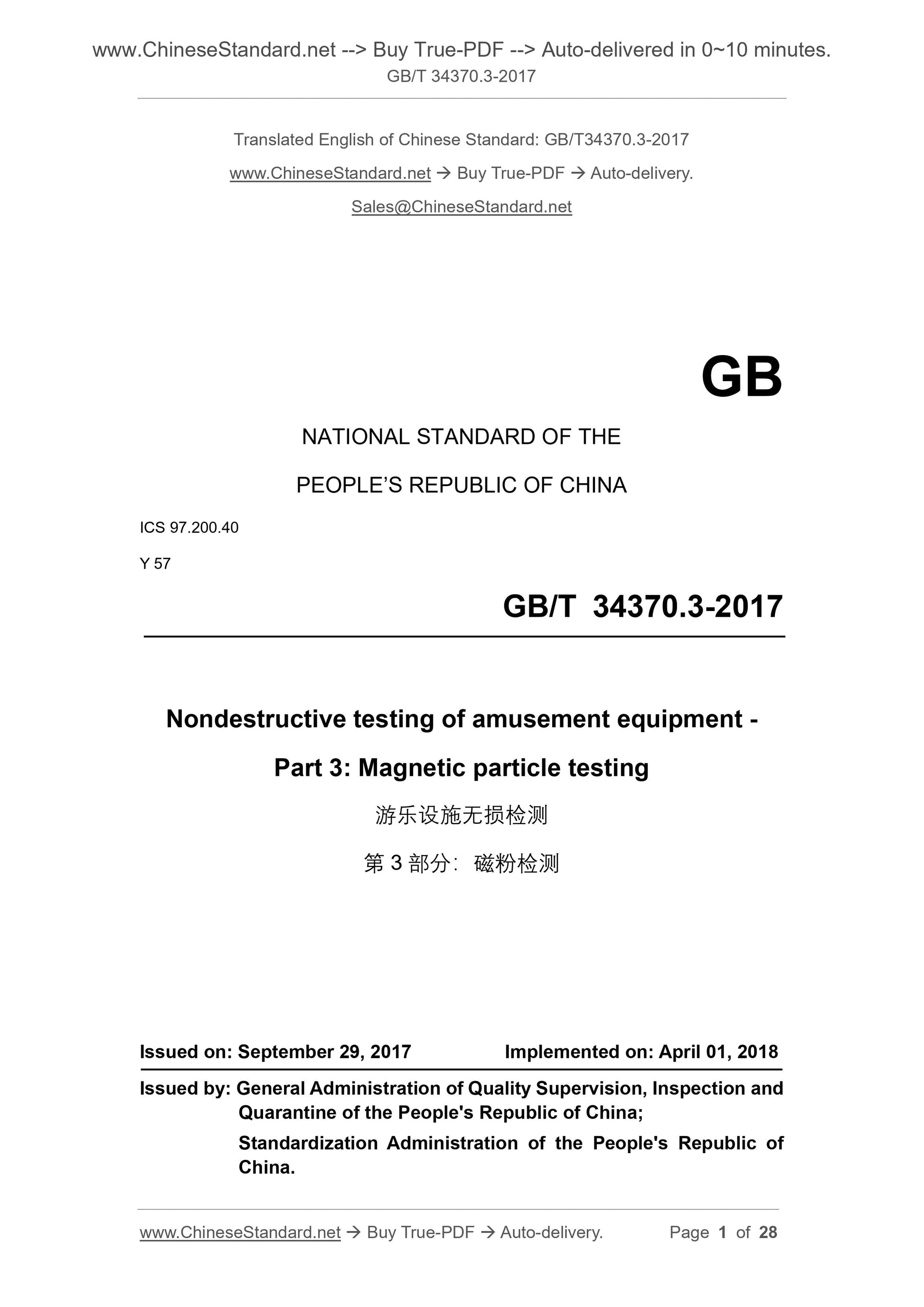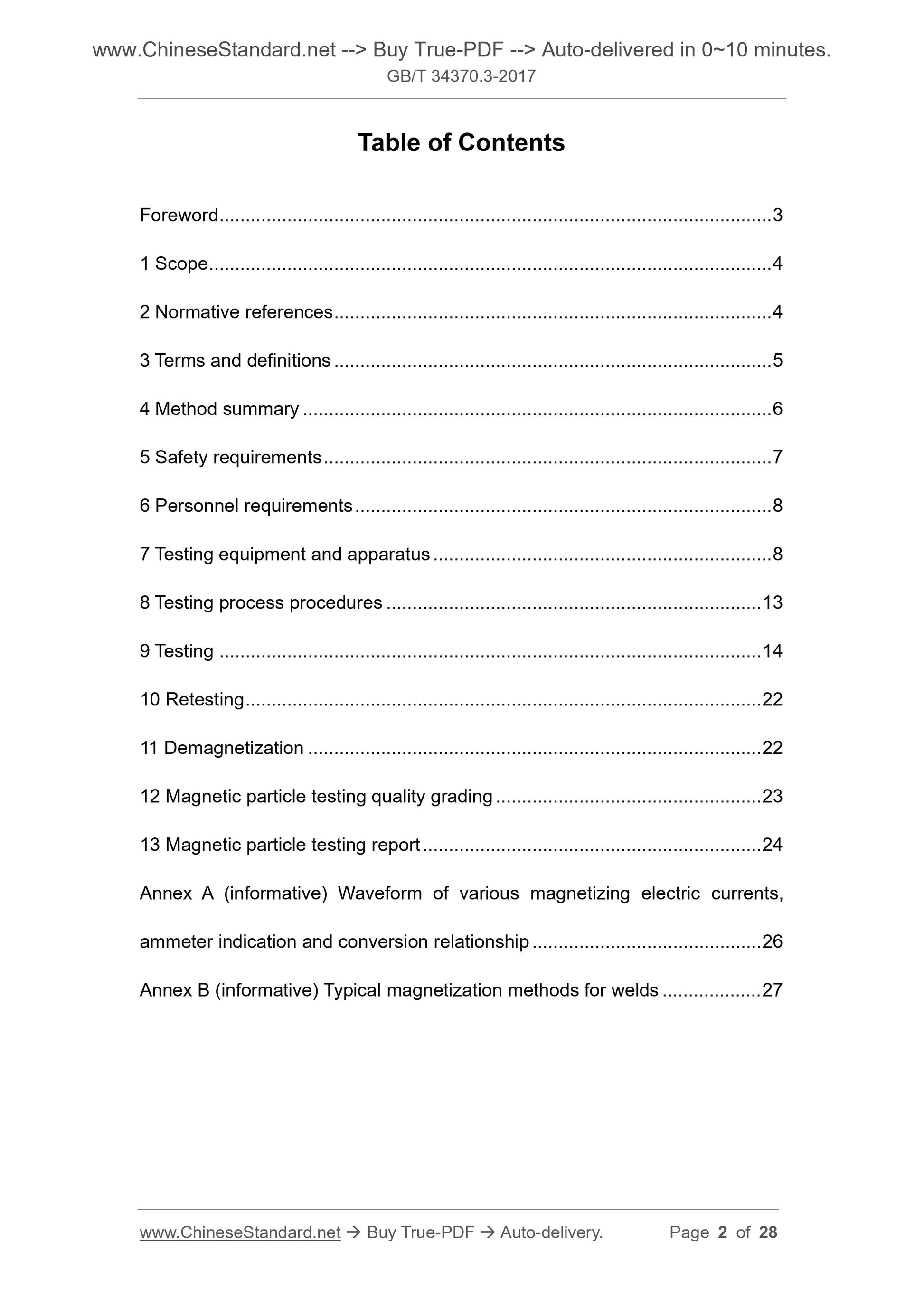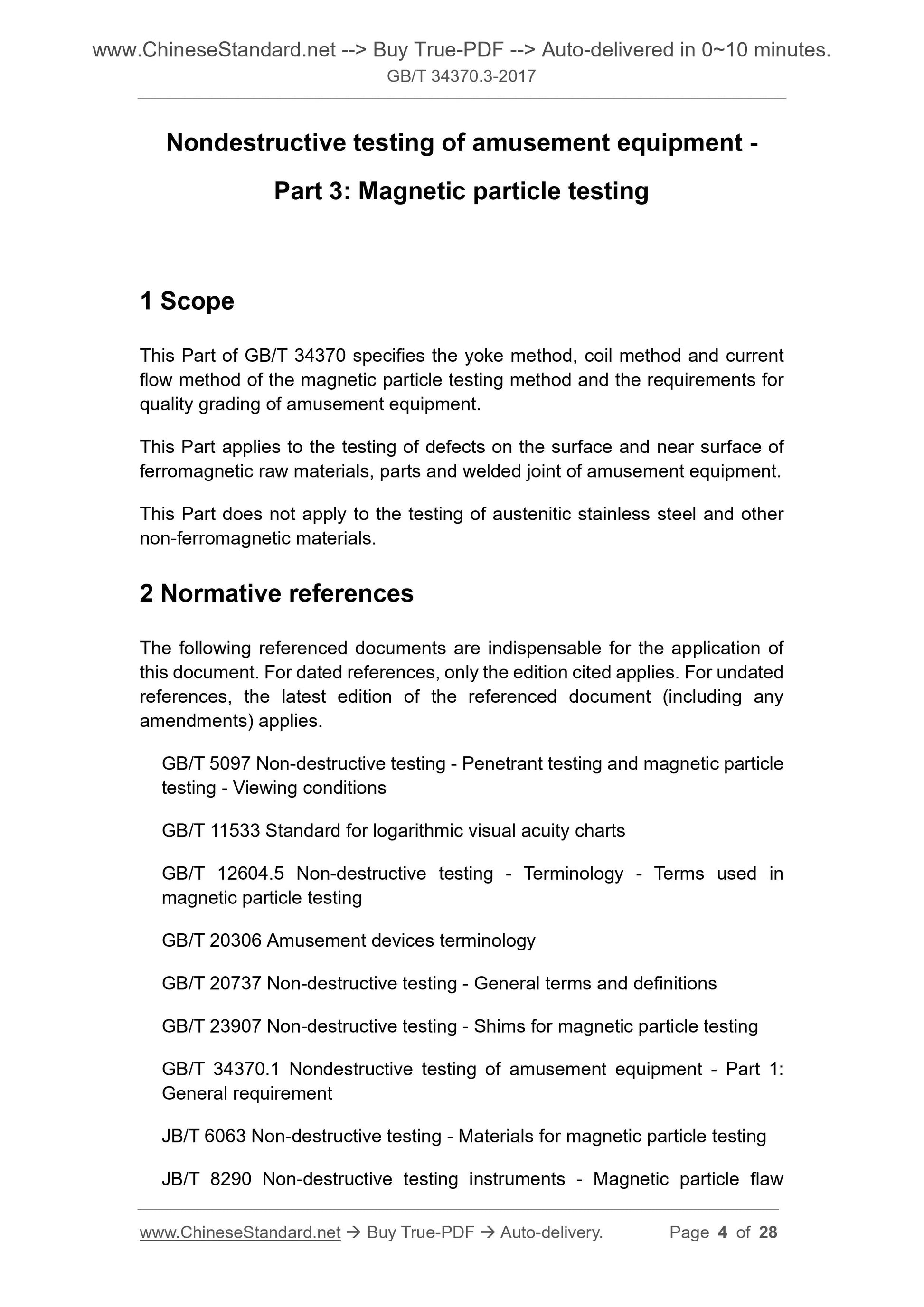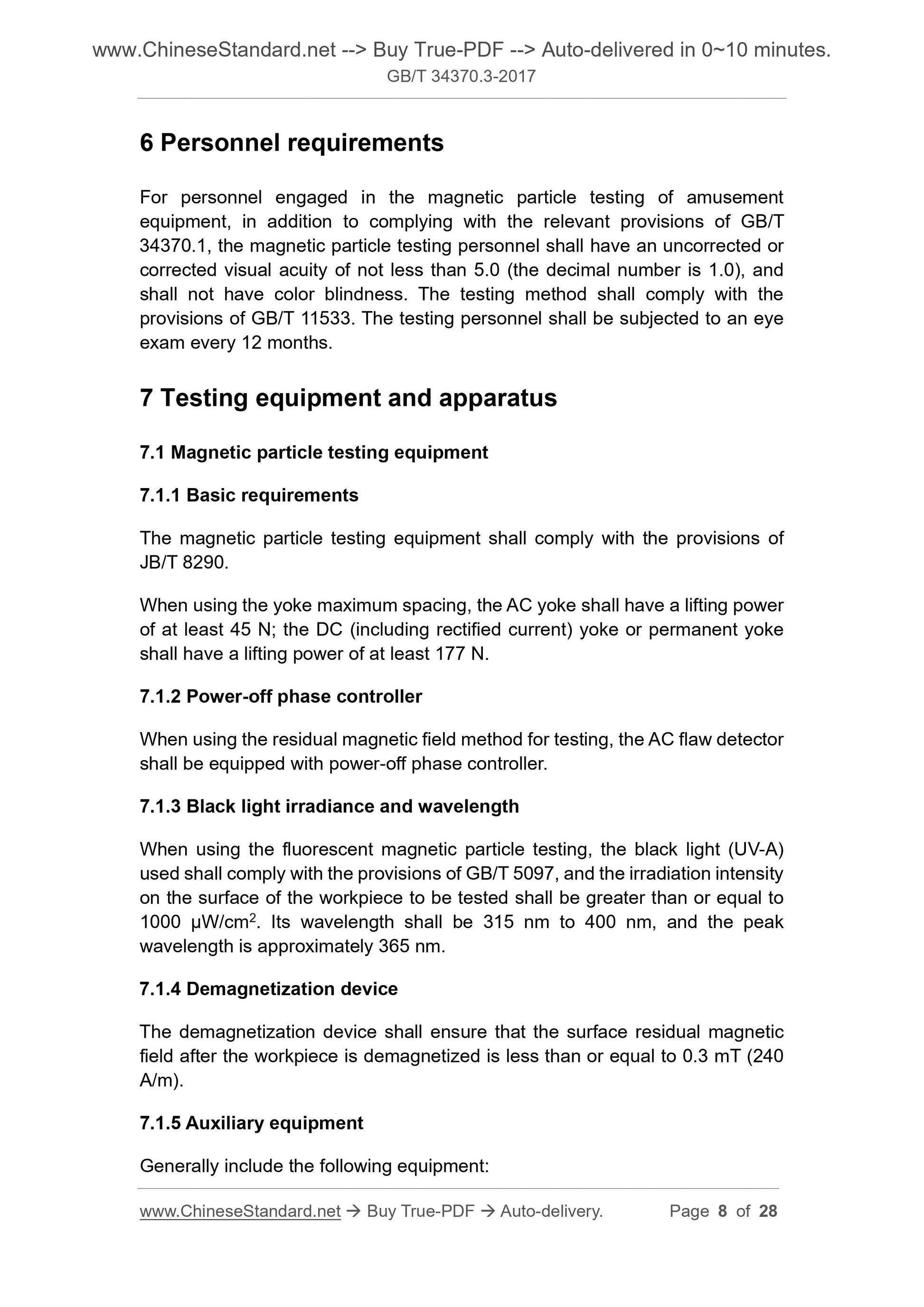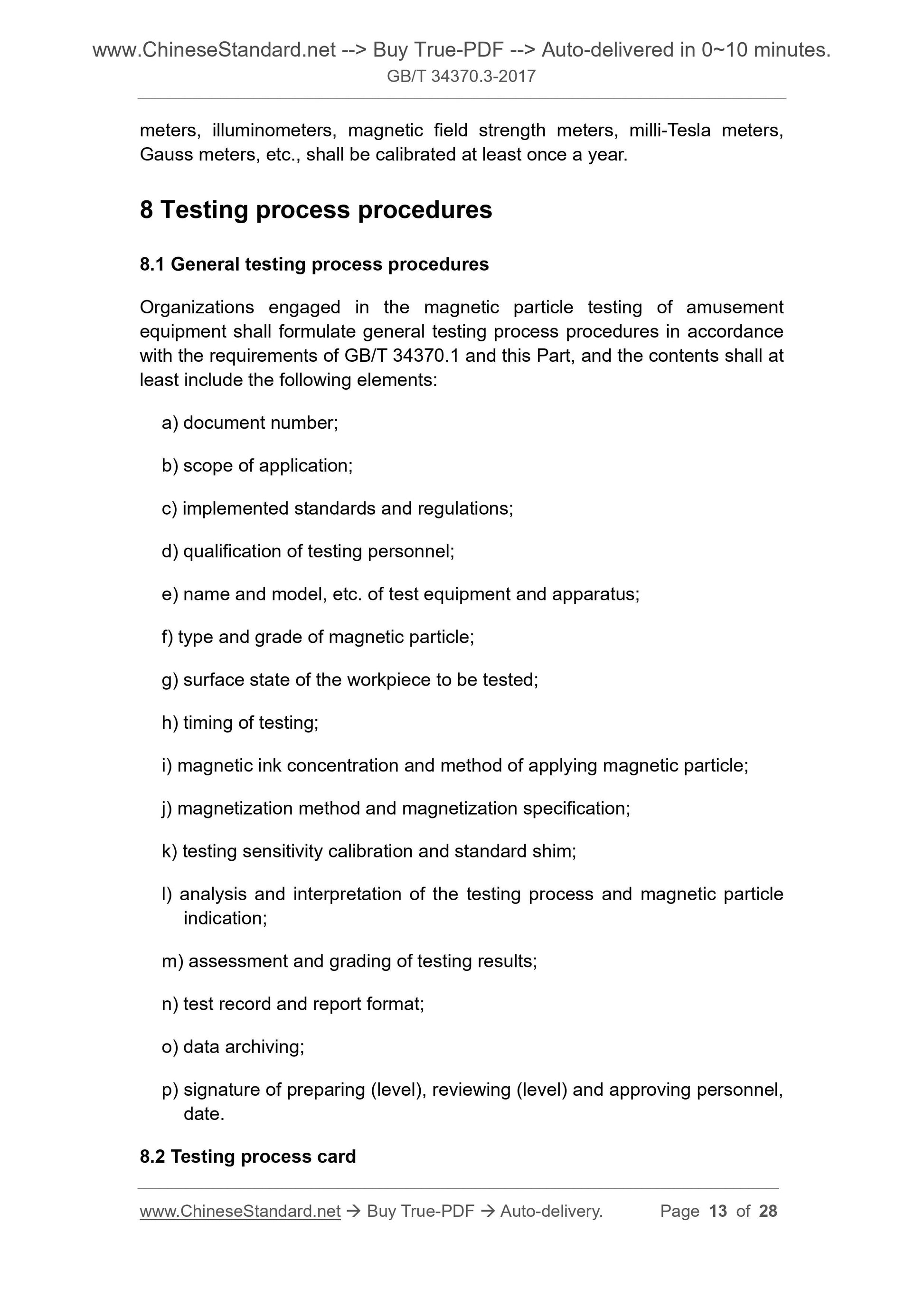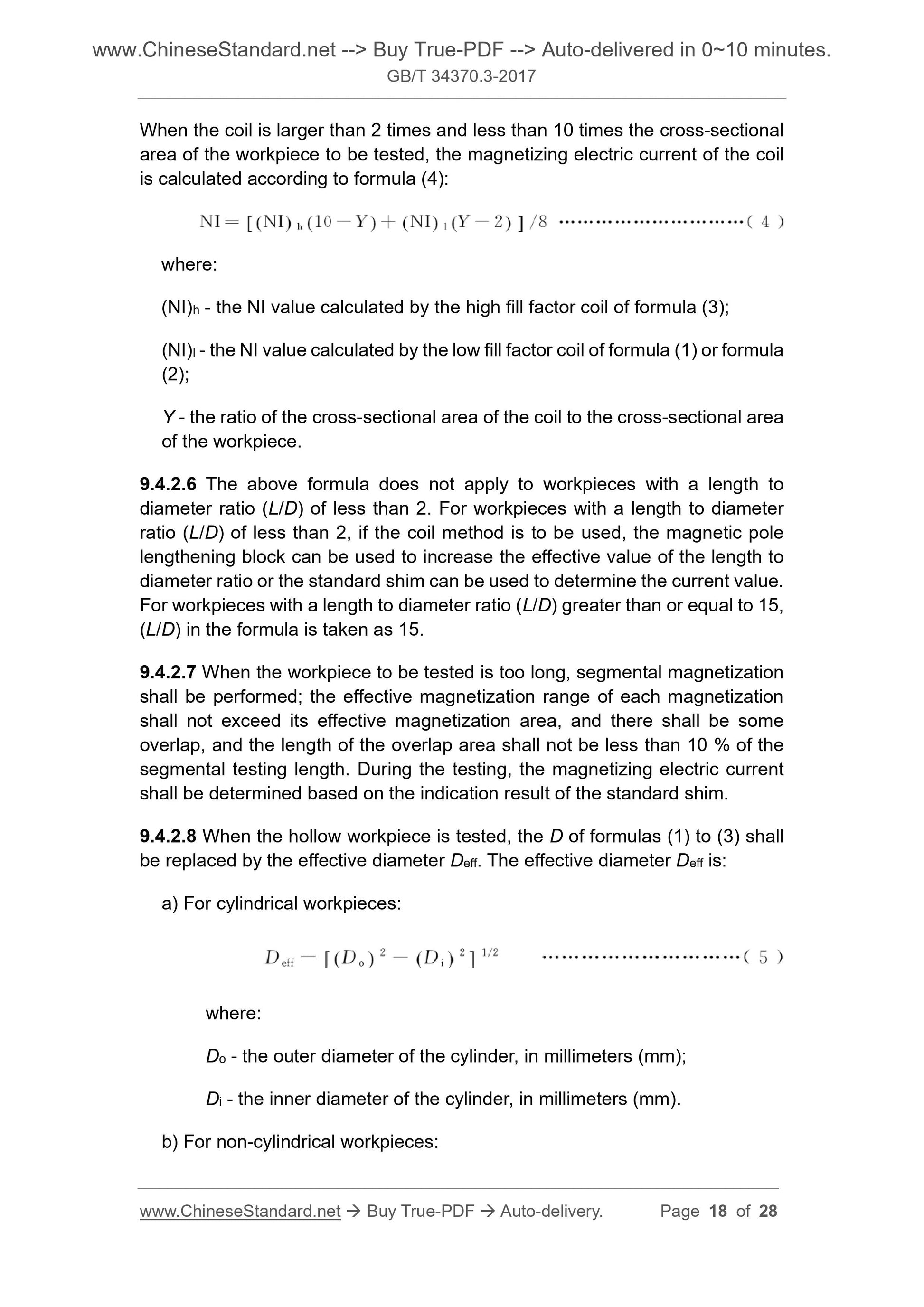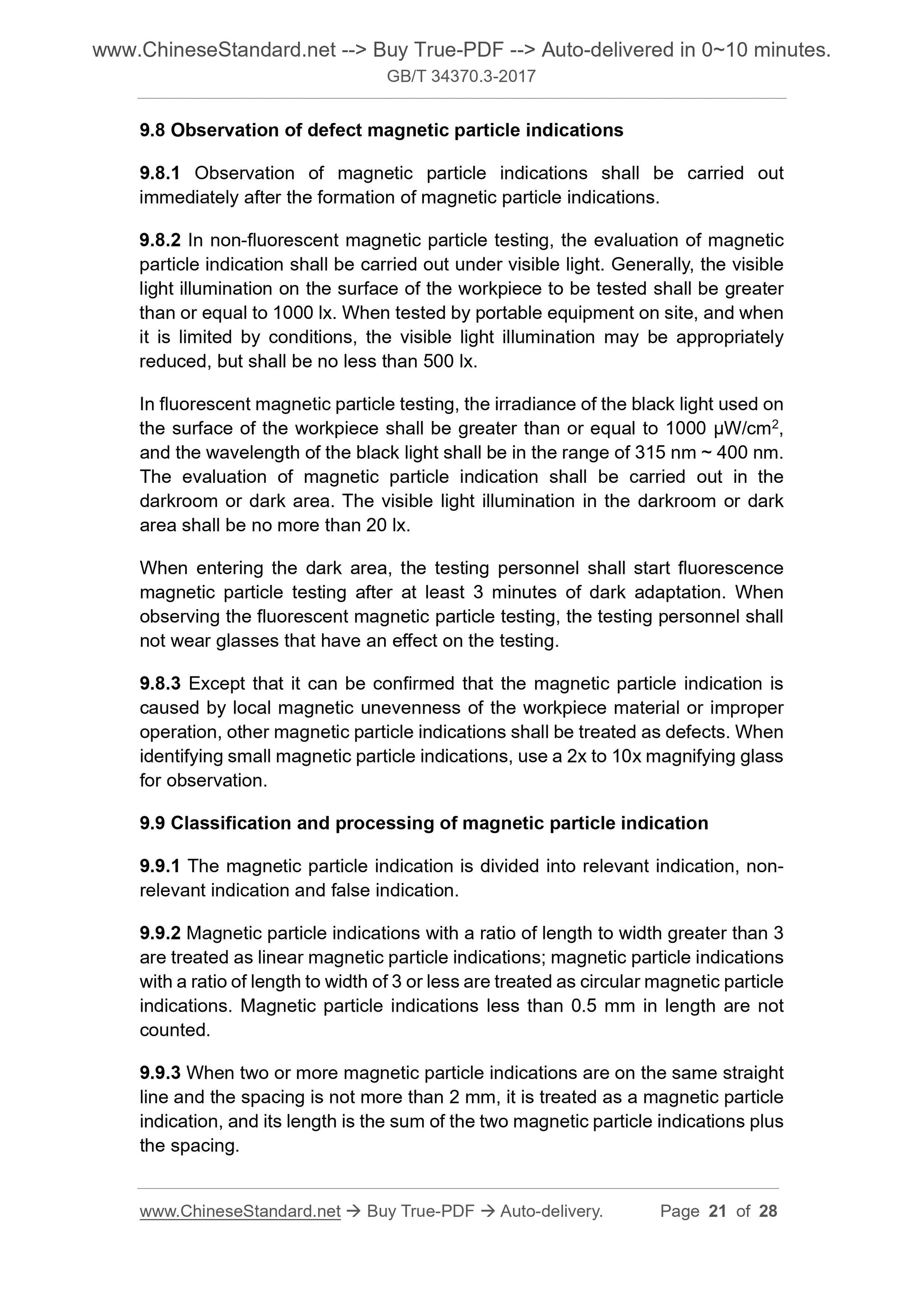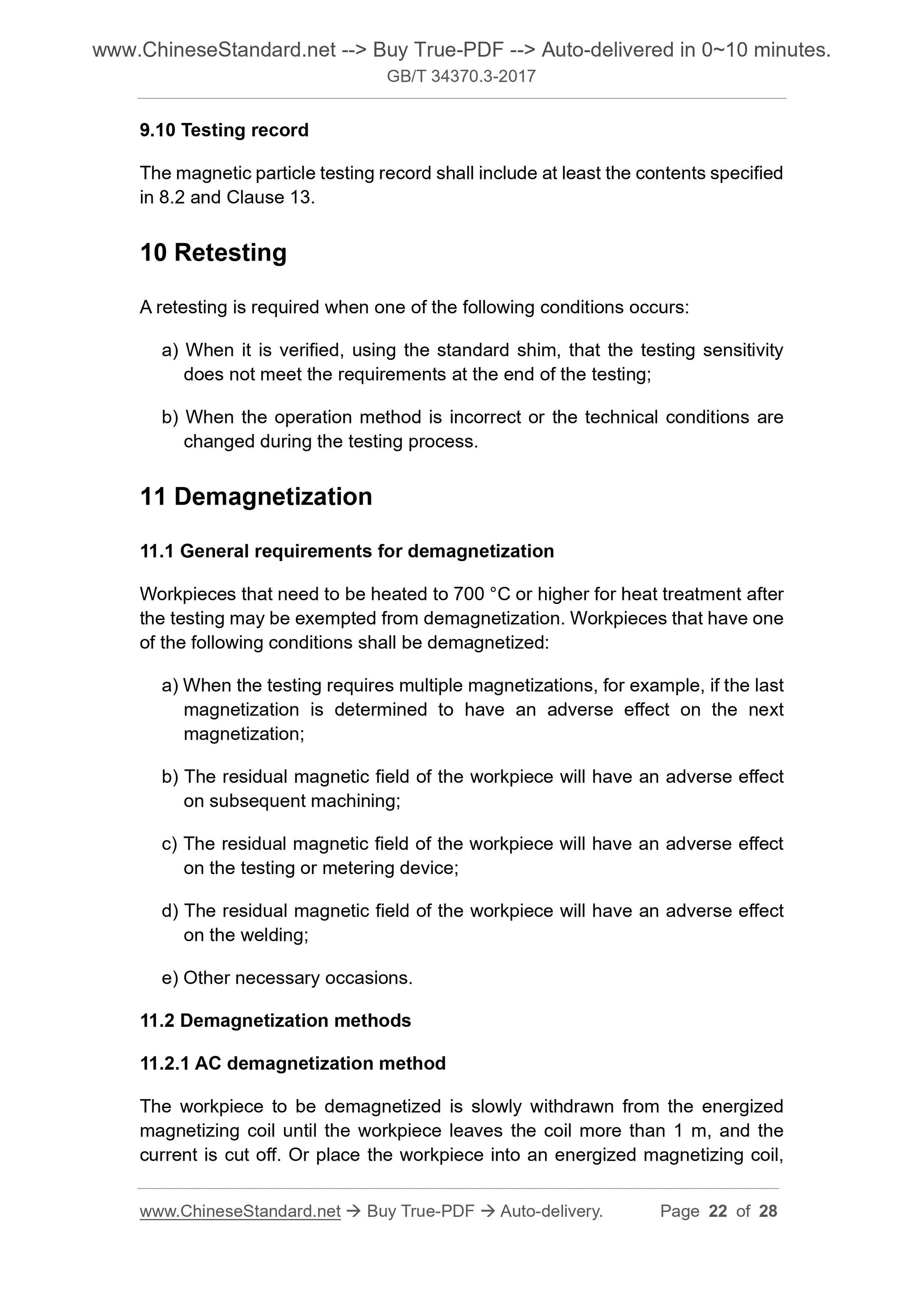1
/
of
8
www.ChineseStandard.us -- Field Test Asia Pte. Ltd.
GB/T 34370.3-2017 English PDF (GB/T34370.3-2017)
GB/T 34370.3-2017 English PDF (GB/T34370.3-2017)
Regular price
$145.00
Regular price
Sale price
$145.00
Unit price
/
per
Shipping calculated at checkout.
Couldn't load pickup availability
GB/T 34370.3-2017: Nondestructive testing of amusement equipment - Part 3: Magnetic particle testing
Delivery: 9 seconds. Download (and Email) true-PDF + Invoice.Get Quotation: Click GB/T 34370.3-2017 (Self-service in 1-minute)
Newer / historical versions: GB/T 34370.3-2017
Preview True-PDF
Scope
This Part of GB/T 34370 specifies the yoke method, coil method and currentflow method of the magnetic particle testing method and the requirements for
quality grading of amusement equipment.
This Part applies to the testing of defects on the surface and near surface of
ferromagnetic raw materials, parts and welded joint of amusement equipment.
This Part does not apply to the testing of austenitic stainless steel and other
non-ferromagnetic materials.
Basic Data
| Standard ID | GB/T 34370.3-2017 (GB/T34370.3-2017) |
| Description (Translated English) | Nondestructive testing of amusement equipment - Part 3: Magnetic particle testing |
| Sector / Industry | National Standard (Recommended) |
| Classification of Chinese Standard | Y57 |
| Classification of International Standard | 97.200.40 |
| Word Count Estimation | 18,113 |
| Date of Issue | 2017-09-29 |
| Date of Implementation | 2018-04-01 |
| Quoted Standard | GB/T 5097; GB/T 11533; GB/T 12604.5; GB/T 20306; GB/T 20737; GB/T 23907; GB/T 34370.1; JB/T 6063; JB/T 8290 |
| Regulation (derived from) | National Standard Notice 2017 No. 23 |
| Issuing agency(ies) | General Administration of Quality Supervision, Inspection and Quarantine of the People's Republic of China, Standardization Administration of the People's Republic of China |
| Summary | This standard specifies the magnetic excitation method of amusement facilities, coil method and power method of magnetic particle detection methods and quality grading requirements. This section applies to recreational facilities ferromagnetic materials, parts and welded joints surface, near surface defects detection. This section does not apply to austenitic stainless steel and other non-ferromagnetic materials testing. |
Share
